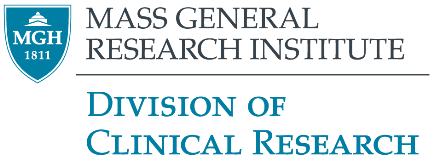Evaluation of Suvorexant for Reduction of Brain Reactivity in Patients With Cannabis Use Disorder (Pilot Study)
Purpose
The goal of this study is to observe the impact of suvorexant, sold as BELSOMRA, on brain activity of people who frequently use cannabis. Suvorexant is an FDA-approved medication to treat insomnia. Researchers think that suvorexant may reduce activity in certain parts of the brain associated with cannabis use. Researchers are studying if this medication does affect brain activity in these areas. For this study, participants will be asked to complete four study visits over approximately 14 days. Each study visit will include interviews, questionnaires, and collection of biological samples for laboratory testing. All participants will be asked to take suvorexant, an FDA approved medication for treatment of insomnia, for 14 days. They will complete two one-hour functional Magnetic Resonance Imaging (fMRI) scans: one before starting the study medication and one after 14 days of taking the study medication. MRI is used in typical medical settings and is considered to be safe. Participants will also be asked to complete a short daily survey for approximately 14 days.
Conditions
- Cue-reactivity
- Cannabis Use Disorder
- Functional MRI
- Orexin Antagonist
Eligibility
- Eligible Ages
- Between 18 Years and 60 Years
- Eligible Sex
- All
- Accepts Healthy Volunteers
- No
Inclusion Criteria
- Age 18-60 years, inclusive - Use cannabis daily or near daily and have been using cannabis consistently for at least the past year, by self-report - Meet criteria for cannabis use disorder (CUDIT-R scores greater than or equal to 8) - Female participants of childbearing potential must have a negative pregnancy test at the enrollment visit - Be able to read, speak, and understand the English language. English can be a second language, provided that the subject understands all the questions used in the assessment measures. - Access to a mobile device to complete daily surveys
Exclusion Criteria
- Participants cannot have an acutely unstable medical or psychiatric illness - Medications with the potential to depress CNS function will be assessed by the PI or study physician and participants will be excluded as necessary - Participants cannot have a history of major head trauma resulting in cognitive impairment, seizure, or other neurological disorders - Presence of metallic foreign bodies such as cardiac pacemakers, perfusion pumps, aneurysm clips, metallic tattoos anywhere on the body, tattoos near the eye - Individuals with severe hepatic impairment will be excluded - Participants cannot be obese as determined by a Body Mass Index (BMI) or greater than 35 - Participants cannot be using a CYP3A inhibitor/inducer (metabolism by CYP3A is the major elimination pathway for suvorexant) - Participants cannot have a current cardiac disorder such as palpitations, tachycardia, and/or the use of the cardiac medication Digoxin - Participants cannot have narcolepsy - Participants cannot self-report complex sleep behaviors such as sleep driving, preparing and eating food, or making phone calls - Participants cannot be actively suicidal (current suicidal ideation with specific plan or intent) and/or report a suicide attempt or psychiatric hospitalization in the past year - Participants cannot have a current substance use disorder based on a DSM-V diagnosis and MINI Interview for Substance Use Disorders other than nicotine and cannabis and cannot meet criteria for moderate or severe alcohol use disorder - Pregnancy or breastfeeding: a negative pregnancy test is required at the enrollment visit - In the opinion of the investigators, not able to complete study procedures or safely participate in the study
Study Design
- Phase
- Phase 4
- Study Type
- Interventional
- Allocation
- N/A
- Intervention Model
- Single Group Assignment
- Intervention Model Description
- This is an open-label, single-group pilot study.
- Primary Purpose
- Basic Science
- Masking
- None (Open Label)
Arm Groups
| Arm | Description | Assigned Intervention |
|---|---|---|
|
Experimental Open-Label Suvorexant |
Participants will complete study visits at Day 0 (Baseline, V2), Day 7 (V3), and Day 14 (V4). After completing a baseline pre-treatment fMRI scan, participants will begin taking 10 mg of suvorexant once daily by mouth in the evening on days 1-3, 15 mg once daily by mouth in the evening on days 4-6, and 20 mg once daily by mouth in the evening on day 7 through the remainder of the study. On day 14, participants will complete a post-treatment fMRI scan. Participants will be treated for 14 days in total; however, due to scanner availability, the second scan may occur more than 14 days after the first scan. In this case, participants will be allowed to continue taking this dose for up to 14 additional days until the final scan occurs (28 days total). |
|
Recruiting Locations
Boston 4930956, Massachusetts 6254926 02114
More Details
- Status
- Recruiting
- Sponsor
- Massachusetts General Hospital
